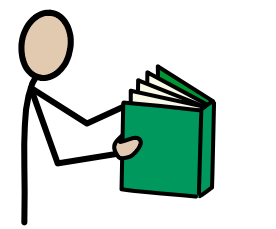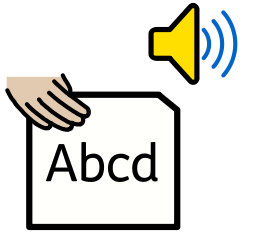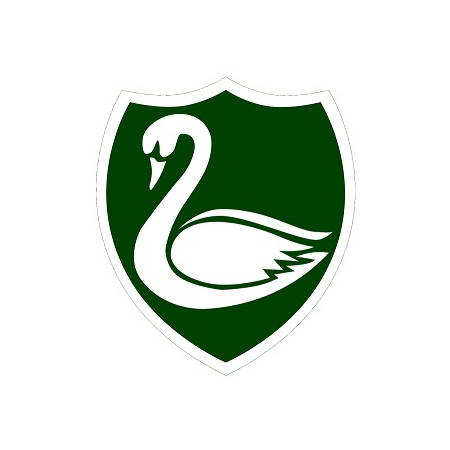English
English

A high-quality English education is the foundation to teaching pupils to speak and write fluently so that they can communicate their ideas and emotions to others and through their reading and listening, others can communicate with them. More than any other subject, English – and especially reading – gives pupils access to the rest of the curriculum and is fundamental to their educational success. At Godstone Primary and Nursery school we aim to give all learners the skills they need to become confident and fluent readers ready for the continuation of their learning journey into secondary school. This includes strategies for decoding unfamiliar words, reading tricky words and reading fluently.
Phonics and Reading


Intent
- To provide all children with a rich and varied reading curriculum focused around achieving the expected standards as laid out in the Educational Programmes (EYFS) and National Curriculum (Y1-Y6).
- For the children to have a strong phonological knowledge of GPCs as well as blending and segmenting strategies to build up on in later reading and writing experiences, including speedy working out of the pronunciation of unfamiliar printed words (decoding) and the speedy recognition of familiar printed words.
- To encourage all children to read widely across both fiction and non-fiction to develop knowledge, understanding and appreciation of themselves, the world in which they live and the wider curriculum.
- To expose children to a range of high-quality texts to develop their expressive and receptive vocabulary.
- To develop the children’s competence in fluency and comprehension in order to read easily and with good understanding to enable children to succeed in all areas of the curriculum.
- To promote high standards of language and literacy by best practice teaching and learning that follows a clear pathway of progression and intervention based on regular assessment.
- To give children experience of all the skills so that by the end of their primary education, all pupils are able to read fluently, and with confidence, in any subject in their forthcoming secondary education.
- To provide all children with the tools that they need to participate fully as a member of society.
Implementation
- Oral blending and initial sound recognition begins at Nursery level following the Foundations for phonics Little Wandle Letters and Sounds Revised (LWLSR) scheme.
- Phonics should be taught as a whole class daily in Nursery to Year Two Spring term following the online lesson plans, resources and accessed via the LWLSR website with absolute fidelity to the scheme and techniques to ensure we are teaching the children to use phonics to work out unfamiliar words and to recognize familiar tricky words.
- Children are encouraged to take home sharing books and other books to read for pleasure as well as their group reading book.
- For children who are following the Phonics scheme, reading books are phonetically decodable and matched to the children’s phonics ability. Reading books are then banded based on the child’s fluency level and age appropriateness.
- Reading practice groups take place three times a week in Reception, Year One, Year 2 and rapid catch up groups. Reading fluency groups to take place with children who are reading below the expected fluency level in Year Two and Key Stage Two three times a week.
- Phonics assessments to be completed every half term for children in Year R to two or for children in Key Stage 2 who are still on the phonics plan. Data will be analysed, gaps identified and Keep up/ Rapid Catch Up interventions arranged in line with LWLSR planning and reviewed after three weeks.
- Fluency assessments to be completed half termly for children in Fluency reading groups or termly for children off plan. Children identified for fluency intervention groups based on these assessments.
- Reading taught explicitly three times per week in Key Stage Two for children who are off phonics plan. Skills-focussed for Key Stage 2: Vocablary Victor; Predicting Pip; Inference Iggy; Rex Retriever; Summarising Sheeba; Cassie the Commentator; Arlo the Author.
- Reception and Year One teachers to lead parent workshops to demonstrate phonics skills and teaching strategies to parents to engage and support at home.
Impact
- Progression of phonics skills in the curriculum from Nursery through the rest of the school.
- Increased confidence in staff in the delivery of the scheme in whole class phonics teaching, keep up, rapid catch up and reading groups.
- Increase in the percentage of GPCs the children know and can remember at the end of each half term.
- Increased number of children achieving the expected standard, or better, in reading at the end of each term/academic year/key stage based on NFER and fluency assessments.
- Children who are confident to use their secure phonics knowledge to blend and segment words for reading and spelling showing an impact on Early writing.
- Improved Year One Phonics Screening and KS2 SATs Reading results.
- Greater confidence and attainment in all subject areas with an impact due to explicit teaching of reading skills.
- Children to be able to read confident and fluently and enjoying reading a wide range of texts now and beyond their time at school.
- Consistently high standards of reading following regular monitoring of teaching and learning.
Writing

Intent – What We Aim For
At Godstone Primary and Nursery School, we want every child to become a confident reader, writer, and communicator who enjoys using language to express themselves. Our goal is to help children develop a love of books, reading, and writing from an early age, giving them the strong foundation they need for lifelong learning.
We aim to:
Build literacy skills: Children learn phonics and reading fluency through a wide range of engaging, high-quality books that reflect both our diverse community and the wider world. We want every child to see themselves as a reader and to enjoy exploring stories and information through books.
Develop writing confidence: We encourage children to enjoy writing creatively and for different purposes. Through shared texts and structured teaching approaches (like Talk for Writing and The Write Stuff), children learn new vocabulary and grammar in exciting, meaningful ways. We also focus on neat, legible handwriting and taking pride in their written work.
Encourage critical thinking: Children learn to think deeply about what they read — analysing characters, themes, and ideas — and to respond thoughtfully in discussion and writing.
Promote inclusion: Our English curriculum is designed for every child, whatever their starting point. We provide the right support so that all pupils can grow into fluent speakers, readers, and writers who feel confident sharing their thoughts and emotions.
Implementation – How We Teach It
We follow proven, high-quality teaching methods to make sure every child thrives in English.
Phonics (Early Reading): We use a consistent phonics programme (Little Wandle) to help children decode words and read independently. Regular checks help us spot who might need extra support, so no one falls behind.
Carefully chosen books: Our text selection includes a mix of fiction and non-fiction from a range of authors and cultures. Each half-term, children explore exciting, age-appropriate texts that often link to other curriculum areas such as history, geography, RE, and science.
Drawing Club (Reception): Through drawing and storytelling, children build imagination, confidence, and early writing skills in a fun, magical way.
Curious Quests (Year 1): Writing becomes a joyful adventure, helping children see their “pen as a magic wand.” This approach develops grammar, vocabulary, and creativity through play and storytelling.
Writing in Years 2–6: Writing is closely linked to reading. Using a Talk for Writing approach, children plan and write in different styles — from stories to persuasive texts and poetry. Vocabulary is celebrated through “magpie-ing” (collecting words they love) and classroom “wow word” walls. Lessons follow a three-week cycle: Imitation – learning from a model text. Innovation – adapting it with their own ideas. Invention – creating their own piece of writing. Explicit teaching of grammar and spelling with vocabulary taught in context, and drama and “real-life” experiences are often used to inspire writing.
Working together: Children take part in discussions, drama, and peer editing to develop communication and teamwork skills.
Supporting our teachers: Staff regularly receive professional training and take part in writing moderation across the school to ensure consistent, high-quality teaching and assessment.
Impact – How We Measure Success
We regularly review how well our English curriculum helps children learn, enjoy, and achieve. We look for strong progress and achievement -most children reach or exceed age-related expectations in reading and writing.
Ongoing assessment: Teachers assess reading, grammar, spelling, and writing throughout the year to ensure children build on what they’ve already learned.
Enjoyment and engagement: Children tell us they love reading and writing, and this is seen in their enthusiasm and participation in lessons.
Personal development: Through books and writing, children develop empathy, resilience, and an understanding of others — skills that help them both in school and in life.
Positive partnerships: Parents share how their children are growing in confidence and enjoying reading and writing at home, showing the strong link between home and school.
Confident teaching: Staff report increased confidence in teaching writing, ensuring consistency and quality across the school.
Lifelong skills: When our pupils leave Godstone, they do so as articulate, thoughtful young people ready for the next stage of their education — and with a lifelong love of language.
